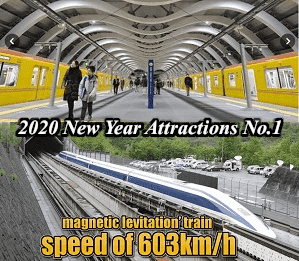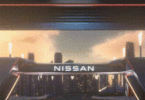Happy New Year 2020! how’s your New Year holidays? I’d like to report you on newer Shibuya station (“Renovated Shibuya Ginza Line station) and experimental Maglev can run as fast as 600kph”.
Contents
We have two items of “New Year attractions 1
One is New Shibuya station and Test Run of Maglev as follows,
Wider, newer Shibuya metro station opens for Ginza Line
A wider and brighter Shibuya Station opened for Tokyo Metro Co.’s Ginza subway line on Jan. 3 at one of the busiest rail complexes in Japan.
The old subway station was located on the third floor of the Tokyu department store, but the new station was constructed about 130 meters to the east over Meiji-dori street.
An M-shaped roof covers the 12-meter-wide platform, about double the width of the old station platform.
The lack of columns on the platform gives a more open feel to the station.
Before the first train on Jan. 3, a tape-cutting ceremony was held at the station, attended by a number of executives, including Tokyo Metro President Akiyoshi Yamamura.
Additional improvements will be made to the station before the start of the Tokyo Olympics in July.
Platform safety gates will be installed along with an elevator that will take passengers directly to the ground floor.
Operations were partially suspended on the Ginza Line between Dec. 28 and Jan. 2 to allow for completion of construction work for the new station.
Feel the attraction of future transport at Yamanashi maglev center
Trains, planes and automobiles are like magic time machines–you go inside, and a short while later, when the doors open and you step out, you’ve been transported to another place far, far away.
A next-generation, supercharged version of miraculous transit vessels can be seen and virtually experienced about an hour’s drive from Tokyo in Otsuki at the Yamanashi Prefectural Maglev Exhibition Center.

A maglev train operated by Central Japan Railway makes a test journey on an experimental track in Tsuru and breaks world speed record with 600km/h, Yamanashi prefecture
Before visiting the center, all I knew about maglev trains was that they were fast trains of the future that seemed to float somehow and glide along. Now, I know a whole lot more. The word maglev comes from the combination of magnet and levitation.
When we were little, we had a small whiteboard with colorful magnetic letters that stuck to the board. We remember being fascinated that some magnets liked each other, and others didn’t.
Later we would discover a physics principle that alike repels and opposites attract; that two north pole magnets pointed at each other will push each away, but a north and a south pole magnet will be attracted to each other. What a glorious fanfare moment this discovery was for us!
Maglev trains take advantage of these properties and switch north and south poles in rapid succession to provide levitation and propulsion. The magnets are on the sides of the train and the two walls that sandwich it.
Unlike regular trains that use rotating wheels on rails to move, there’s minimal resistance, which makes the trains quieter, smoother and faster.
“Before you leave the exhibition center, put your hands on the body of the train that’s on display and feel it,” the friendly but professional guide who demonstrated superconductors’ characteristics using a miniature roller coaster told us.

A tour guide explains the characteristics of superconductors. Various exhibits are explained in English, Chinese and Korean at the maglev center
“Once the train is in operation, it will be like boarding an airplane using a jet bridge, making it unlikely for you to ever touch the body of a maglev again.”
We did as she said, and tenderly stroked the Shinkansen-like body. It was, well, just as one would expect. Still, kinda special.
The Chuo Shinkansen maglev train will whisk passengers from Shinagawa to Nagoya in 40 minutes and to Osaka in 67 minutes. Wow. JR aims to commence commercial services by 2027 and 2045 respectively.
As with any project of this scale, there are political, environmental and fiscal issues and vested interests jostling about. Still, Japan holds the fastest maglev train world record at 603 kph, and that’s quite a magnetic pull.
Finally, let’s enjoy riding on Test-run Maglev speeding over 600km/h which is the world-fastest record.
Finally, we have “Shinkansen (Bullet Train)” to be well worth visiting, thanks








